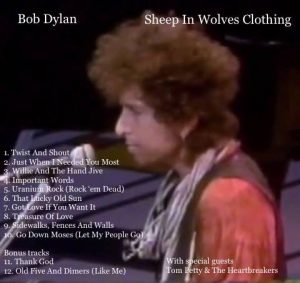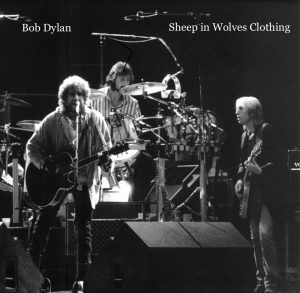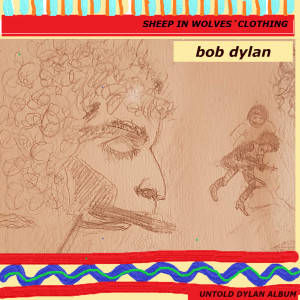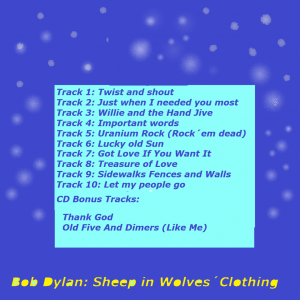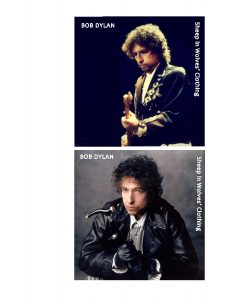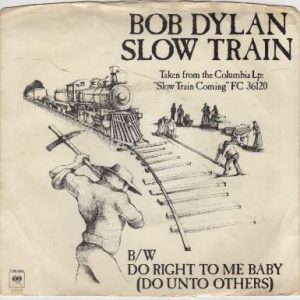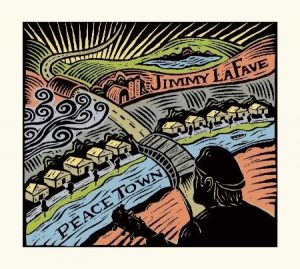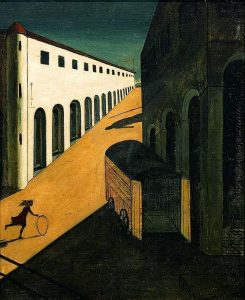by Paul Robert Thomas
Caribbean Wind
“People can learn everything about me through my songs, if they know where to look. They can just juxtapose them with certain other songs and draw a clear picture”. (Bob Dylan(1))
Introduction
“The powerful operations of God’s spirit, quickening or reviving the heart towards God, are compared to the blowing of the wind“. (John 3:8(2))
I must state from the outset that I rate Caribbean Wind as one of Dylan’s most important works of the early eighties, mostly as an indicator of the position of his soul, as a man who was now bereft of his family life following the embittered divorce proceedings and who had at first totally embraced Jesus Christ, but was quickly falling out of His grasp – at least the dogmatic grasp of the Christian Vineyard Fellowship, and who would soon return to the religion of his forefathers, Judaism.
The other important works of this period of inner conflict for Dylan are, Angelina, The Groom’s Still Waiting At The Altar and Every Grain of Sand and, listening to the three versions of Caribbean Wind that I have, the San Francisco, Fox Warfield Theater live performance of 12 November 1980, the studio version of 31 March 1981, and the official Biograph studio performance of 7 April 1981, one is immediately struck by the urgency and energy of these performances, irrespective of whether or not one can discern what he actually sings in between the choruses and albeit that the Biograph version has apparently been watered down and lyrically rewritten, done, one presumes, to protect identities and to distance himself emotionally and religiously from the song.
The story line has been changed somewhat, although not entirely for the worst, and I feel that the Biograph version is less overtly Christian and that he has injected more Judaic themes into it. Enough has been written by others about the actual performance(s) of Caribbean Wind, particularly and very eloquently by the likes of Paul Williams in his book, Bob Dylan Performing Artist 1974-1986, and by Clinton Heylin in his books, Behind The Shades and The Recording Sessions 1960-1994, and I do not propose to go over previously covered ground but will try and provide new insight into the sources and interpretations of some of the song’s lines, many of which are drawn from Scripture, and I will attempt to collate as much information as has been previously written about this song. In fact, the very first two lines of this rewritten Biograph version are drawn directly from the Old Testament Book of Song of Songs(3) !
It is a reasonable assumption that Dylan does not use Biblical lines and passages just for effect and I believe that his intention is to lead us, through our perception of the meaning of that particular Biblical line or passage, to greater understanding and to further expand the meaning of that feeling that he is trying to invoke within us through the lines of that song, and I do not propose in this article to quote whole Biblical passages verbatim, but I will, where I feel it necessary and relevant, quote from corresponding lines or verses which I feel relate to that feeling and it should be borne in mind that this is purely my own personal opinion based upon my own studies and knowledge of both Christian and Judaic theological doctrines. A lot of Dylan’s Biblical preoccupation seems to be taken up by his almost total belief in the “Coming End of Days” as expounded in the New Testament Book of The Revelation of St. John the Theologian, which in itself is derived from a number of other Old Testament Books, including the Books of Daniel and Ezekiel.
Of one thing that I am sure, and that Dylan has an intimate and studied knowledge of Scripture amply demonstrated by his use of Scripture in his compositions from the very beginning of his career to the present and that he has a deep knowledge and understanding of their true anagogical meaning, and I will attempt in the following composition to reveal to you those lines, words or feelings, that I believe derive from Scripture as used by Dylan in this work.
It is most probable that Caribbean Wind was written after the end of the “79” tour which ended on 21/5/80 at Dayton, Ohio, and before the commencement of the “80” tour on 9/11/80, the first version of Caribbean Wind was performed in the studio sometime in October 1980
https://vimeo.com/307193835
Dylan spent a lot of his spare time sailing around the Bahamas and the Caribbean on a yacht named The Water Pearl he co-owned, which was built on the Caribbean Island of Benquia and was launched in November 1979. Although the co-owner of the yacht most probably made it to the launch, Dylan was too busy touring at the time, from 1/11/79 until 9/12/79, mostly at his first sojourn at San Francisco’s Fox Warfield Theatre; “I’m usually either in New York or on the West Coast or down in the Caribbean. Me and another guy have a boat down there….”(4).
In the Biograph, Cameron Crowe interview, Dylan elucidated further upon the song; “I started it in St. Vincent when I woke up from a strange dream in the hot sun….I was thinking about living with somebody for all the wrong reasons”.”Caribbean Wind is an important song in Dylan’s oeuvre, particularly as its synthesis of apocalyptic conceit and his familiar theme of disaffected love was more familiar terrain to his fans than anything explored on his previous two albums, suggesting that he was at least learning to assimilate rather than ignore his pre-Born Again work. That the song reflected Dylan’s own problems with women, given past history, seems extremely likely”(5).
In order not to become too confused with so many different lyrics and versions of one song, I will try to remain faithful to the song’s lyrics as published in the Bob Dylan Lyrics 1962-1985 book(6) which is, more or less, the Biograph version of the song and are the fourth and final set of lyrics for Caribbean Wind. I will also, later in this article, make passing references to the second set of lyrics and song from the San Francisco 12/11/80 live performance, and also with the third set of lyrics and song from the studio performance of 31 March 1981 (as yet I haven’t managed to locate a set of lyrics from the first studio performance of Caribbean Wind from October 1980, and those tapes that I do have which are marked ‘10/80’, are all this same 31/3/81 performance).
Caribbean Wind – Biograph – 7/4/81 (Rundown Studios, Santa Monica, California)
Musicians: Bob Dylan, vocals and piano; Fred Tackett, Guitar; Steve Ripley, Guitar; Tim Drummond, Bass; Carl Pickhardt, Keyboards; Jim Keltner, Drums; Clydie King, Carolyn Dennis, Madelyn Quebec and Regina McCrery, Backing Vocals.
verse 1
She was the Rose of Sharon, from paradise lost,
From the city of seven hills, near the place of the cross,
I was playing a show in Miami, in the Theatre of Divine Comedy.
Told about Jesus, told about the rain,
She told me about the jungle, where her brothers were slain,
By the man who invented iron and disappeared so mysteriously.
verse 2
Was she a child or an angel, did we go too far?
Were we sniper bait, did we follow a star?
Through the hole in the wall to where the long arm of the law cannot reach.
Could I been used and played as a pawn?
It certainly was possible as the gay night wore on
When men bathed in perfume, and practiced the hoax of free speech
chorus
And them Caribbean winds still blow, from Nassau to Mexico,
Fanning the flames in the furnace of desire.
And them distant ships of liberty, on them iron waves so bold and free,
Bringing everything that’s near to me, nearer to the fire.
verse 3
Sea breeze blowin’, there’s a hell hound loose,
Redeemed men, who have escaped from the noose,
Preaching faith and salvation, waiting for the night to arrive.
He was well connected, but her heart was a snare,
And she had left him to die in there,
He was goin’ down slow, just barely staying alive.
verse 4
The cry of the peacock, flies buzzing my head,
Ceiling fan broken, there’s a heat in my bed,
Street band playing ‘Nearer My God to Thee.’
We met at the station, where the mission bells ring,
She said ‘I know what you’re thinking, but there ain’t a thing,
You can do about it, so let us just agree to agree’.
repeat chorus
verse 5
Atlantic City, by the cold gray sea,
Hear a voice crying ‘daddy’, I always think it’s for me,
But it’s only the silence in the buttermilk hills that call.
Every new messenger bringing evil report,
‘bout armies on the march, and time that is short,
And famines and earthquakes and train wrecks and the tearin’ down of the wall.
verse 6
Did you ever have a dream, that you couldn’t explain?
Ever meet your accusers, face to face in the rain?
She had chrome brown eyes that I won’t forget as long as she’s gone.
I see the screws breakin’ loose, see the devil pounding on tin,
I see a house in the country being torn apart from within,
I can hear my ancestors calling from the land far beyond.
repeat chorus
(1985 Special Rider Music)
The Song
Verse 1 – The Rose of Sharon
I suspect that Dylan’s changing personal relationships and his declining dependency and also disillusionment with the Christian Vineyard Fellowship influenced the lyrical changes to Caribbean Wind, the first lines of which from the 2nd version at San Francisco on 21/11/80, and the third version from 31 March 1981, remain virtually unchanged. The 31/3/81 version states; She was well-rehearsed, fair brown and blonde, and the 12/11/80 San Francisco performance states; She was from Haiti, fair brown and intense, and from this one can deduce that she is a dark-skinned Haitian from the West Indies. By the time of the Biograph (fourth) version, she had changed identity.
Lines 1 & 2 state; She was the Rose of Sharon from Paradise Lost, from the City of Seven Hills near the Place of the Cross.
The Rose of Sharon is drawn directly from the Old Testament Book of Song of Songs (or, Song of Solomon) Ch. 2:1. She is also the Lily Among Thorns, as mentioned by Dylan in Someone’s Gotta Hold of my Heart, (later rewritten to become Tight Connection to my Heart). She is Israel, the daughter of Zion, the Rose of Sharon, the Lily Among Thorns. If you read back to Ch. 1:6 in Song of Songs then this she, the Rose of Sharon, is revealed as being black, as is the original she from the 31/3/81 and 12/11/80 versions of Caribbean Wind. By the time of the Biograph version, she appears to have changed both colour and religion! Incidentally, Song of Songs is a parable about the love between Israel and her God told in terms of a woman and her lover.
From Paradise Lost could refer to either the Garden of Eden from the Book of Genesis, or to the Land of Milk and Honey – Israel, (or/and to Milton’s poem). From the City of Seven Hills near the Place of the Cross, identifies the location as being the now joint Israeli/Palestinian City of Hebron, which is indeed built upon seven hills and is very near to the Place of the Cross, identified in Luke 23:33 as being Calvary, near Jerusalem. So it appears that the rewritten version of 7/4/81 has either Israel, or more likely, an Israeli/Jewish woman replacing this brown Haitian Lady as the opening character! What I find even more intriguing is the fact that Hebron is also the burial place of the Biblical character Sarah (Dylan’s ex-wife spelt her name without the ‘h’ at the end), and also of Sarah’s husband, Abraham (Dylan’s father was called ‘Abe’, which is short for Abraham ); ‘Abraham buried Sarah his wife in the cave of the field of Machpelah before Mamre; the same is Hebron’ (Genesis 23:19), and; ‘The field which Abraham purchased, there was Abraham buried, and Sarah his wife’ (Genesis 25:10).
So perhaps Dylan has changed the identity of the she from his black Haitian woman lover to that of his ex-wife Sara – thereby perhaps charting the beginnings of his move back to Judaism from Christianity, and with a stroke of his pen, not only confusing the plot, but also apparently making his love life appear more stable than perhaps it actually was!
Line 3 states; I was playing a show in Miami in the Theatre of Divine Comedy, and is identified by Paul Williams as being the final show of the 1978 tour at Hollywood, Florida on 16/12/78(7). A silver cross had been thrown onto the stage at San Diego on 17/11/78, and Dylan, uncharacteristically, picked it up and kept it and it would, as he later revealed in a 1979 interview in San Diego, help to influence and fuel that ‘slow train’ that he was starting to ride upon !! During these last concerts of the 1978 tour Dylan started to introduce Biblical lines to his concert songs, inserting into his performance of Tangled up in Blue such rewritten lines as; She opened up the Bible and started quoting it to me, the Gospel according to Matthew, verse 3, Chapter 33 (which incidentally does not exist, as the Book of Matthew ends at Ch. 28:20!). The New Testament Book of Matthew is Christianity’s attempt to convince the Jews that Jesus Christ was The Messiah for whom they longed.
Line 4 states; Told about Jesus, told about the rain, thus indicating that he was told by her, the Rose of Sharon, about Jesus and the rain, (both earlier versions of 31/3/81 and 12/11/80 contain different words). Was it thus, at this 16/12/78 Florida show, that she told him all about Jesus? It would of course be of great interest to try and identify her, the she of this song whom Dylan has apparently gone to great lengths to hide the identity of, particularly with his final rewrite changing her from a black Haitian (on the live 12/11/80 version) to a Jew (on the Biograph version)! Helena Springs had been a backing singer with Dylan since the 1978 tour started in Japan on 20/2/78(8), and he reportedly become very ‘close’ to her; ‘He turned to those in his band who had discovered peace with Christ, notably Helena Springs, the lady with whom he had been writing songs of betrayal and loneliness……..and who, of all the musicians, was closest to Dylan at this point’(5). Helena Springs – “We were together in Brisbane one evening (between 12-15/3/78) he started strumming his guitar and I started to sing and that was when we got Walk Out in the Rain”(5). This song appears on page 589 of The Lyrics 1962-1985 book(6) as a joint Helena Springs/Dylan composition – thus from where the line in Caribbean Wind; She told me about Jesus and the rain comes from ?
Another revealing line from Walk Out in the Rain is; I have come from so far away, just to put a ring on your finger! A similarly revealing line also emerges from the co-written Helena Springs/Dylan/Greg Lake composition, Coming From the Heart the Road is Long; Of all my loves you’ve been the closest! In fact, Helena Springs would depart from Dylan and the band’s company during the winter of 1980, perhaps one of the reasons for the rewrites and for changing the opening characters identity in Caribbean Wind ? Was she, Helena Springs, from Haiti ? I don’t know.
The last 2 lines of verse 1 state; She told me about the jungle where her brothers were slain, and is a complete rewrite from the previous 2 versions. Were her brothers slain in the jungles of Haiti by the evil dictator Papadoc ? This last line escapes me; By the man who invented iron and disappeared so mysteriously. Who did invent iron ? The first mention in the Bible of iron is at Geneses 4:22 and relates to a relative of Cain (who himself was mentioned by Dylan in Every Grain of Sand), ‘Tubalcain, an instructor of every artificer in brass and iron’. The 12/11/80 live versions last two lines flowed much better; She told me about the vision, told me about the pain, that had risen from the ashes and divided in her memory, and relates directly to; ‘Tell the vision to no man, until the Son of Man be risen from the dead’, at Matthew 17:10, and again demonstrates Dylan’s attempt to de-Christianise his Biograph lyrics.
Verse 2 – Child or Angel ?
Line 1 asks; Was she a child or an Angel, did we go too far ? ‘‘The term child in the New Testament is more often used of those who have believed and accepted Christ’(2). An Angel means literally ‘messenger/a messenger of God’ (Genesis 24:7). Did Dylan go too far either/both with her, or/and with his conversion to Christianity ?
Line 2 is apparently misprinted in the Lyrics book and should read; Were we sniper bait, did we follow a star? Who used them as sniper bait ? The answer is perhaps contained within line 4 of this verse as discussed below. Did we follow a star? ‘The Bright and Morning Star’ are collective titles in Scripture for Jesus Christ (Revelation 2:28(2)), and does Dylan thus infer that he blindly followed that star, that is, the teachings of Jesus Christ? Covenant Woman shining like a Morning Star (Covenant Woman from the album Saved) ‘If Covenant Woman was none other than Helena Springs, as has long been rumored, their break-up shortly before the Saved sessions may have coloured his commitment to the song’, and, ‘Clydie King had joined Dylan’s band before the Saved album sessions (between 11-15/2/80) replacing Helena Springs. She also appears to have quickly replaced Springs in his affections’(5).
Line 3; Through a hole in the wall to where the long arm of the law cannot reach. ‘The Wall’ is the Wailing, or Western Wall in Jerusalem, the only remnant of Judaism’s Holiest of Holy Temple(s). The long arm of the law refers not to the police, but to ‘The Mosiac Law’; ‘And when I looked, behold a hole in the wall. Then said he unto me, Son of Man, dig now in the wall….and when I had digged into the wall, behold a door’(Ezekiel 8:7&8). Dylan’s line also loosely brings to mind the Hole in the Wall Gang from the film Pat Garrett and Billy the Kid, named after their retreat as outlaws to their place of refuge. The hole in the Wailing or Western Wall, the symbol of Judaism, could be said to be Christianity. There ain’t no wall you can’t cross over, ain’t no fire you can’t walk through (Need a Woman).
Line 4; Could I have been used as a pawn? Perhaps he felt that he was used by the Christian Vineyard Fellowship? Helena Springs says; “I remember a lot of people (backstage at the Fox Warfield Theatre in San Francisco) were from the Vineyard Fellowship in Los Angeles….I remember a lot of them pressuring him about a lot of things….Like if he’d drink some wine….They were not allowing him to live. They were just being too much of a headache. And I remember one time he said to me ‘God it’s awfully tight, it’s so tight, you know’! And I thought and said ‘Yeah, it seems like you gotta get out from under it a bit’. And I felt a lot of pressure from those people….Also he found a lot of hypocrisy from those people….They were saying one thing, and doing another. He mentioned that to me too”(5). And San Francisco seems to be the subject of the last two remaining lines in verse 2:
Lines 5 & 6; It certainly was possible as the gay night wore on, when men bathed in perfume and practiced the hoax of free speech. San Francisco was the ‘gay capital’ of the USA if not the world, and the gay night and men bathed in perfume certainly leans towards homosexual men. Dylan did take to ranting and raving against the homosexual bathhouses of San Francisco from the stage of the Fox Warfield Theatre in San Francisco. Later from the stage at Hartford on 8/5/80 he said; “We started out in San Francisco. It’s a kind of unique town these days. I think it’s either one third or two thirds of the population that are homosexuals in San Francisco. I’ve heard that said. Now, I guess they’re working up to 100%, I don’t know. But any way, it’s a growing place for homosexuals, and I read they’ve homosexual politics, and it’s a political party. I don’t mean it’s going on in somebody’s closet, I mean it’s political! All right, you know what I’m talking about? Anyway, I would just think, well, I guess, the iniquity’s not yet full. And I don’t wanna be around when it is”!(9). ‘Iniquity’! Now there’s a grand Biblical word which means; ‘Great injustice, or wickedness’(10). ‘Dylan’s committed to Christ, but Christ isn’t Christianity, and Christianity itself is no monolith. Joan of Arc was burned at the stake for doing what Dylan and other born-again Christians consider the essence of their religious practice, talking to and listening to God’(7). This quote is from Paul Williams, an important Dylan commentator who, like most of his contemporary’s, seems to have difficulty in accepting that Dylan’s conversion to Christianity could have much to do with God, but more to do with his rejection by women! (In fact, the Catholic Church realized their error of judgment and later made Joan of Arc a saint. Who is to say that neither she nor Dylan could possibly have been in communication with the higher spirit ?!! )
The Chorus.
Line 1; And them Caribbean Winds still blow from Nassau to Mexico. Dylan asked on Shot of Love; What makes the wind blow tonight? Why Caribbean? Why Wind? In the late 70’s and early 80’s Dylan spent a lot of his time sailing around the Bahamas and the Caribbean on a yacht named The Water Pearl he co-owned; “I’m usually either in New York or on the West Coast or down in the Caribbean. Me and another guy have a boat down there….”(4). In the Biograph Cameron Crowe interview Dylan elucidated further upon the song; “I started it in St. Vincent when I woke up from a strange dream in the hot sun….I was thinking about living with somebody for all the wrong reasons”. Nassau, Latitude 25.05 North, Longitude 77.2 West in the Bahamas, is situated to the east of Mexico and is down the Gulf of Mexico and Dylan is informing us that the wind is blowing from the east to the west, which is the direction that he is drifting in and is in fact in the opposite direction to the ‘Sun’, viz. Jesus Christ, that he saw shining from the west to the east earlier in I Shall be Released, and the east to west direction follows Matthew 24:27 in; ‘for as the lightening cometh out of the east and shineth even to the west, so shall also the Coming of the Son of Man be’. Has he lost some of his fervent belief in Jesus Christ as the Saviour, and is he longing for His second return when He’ll replace wrong with right (When He Returns). Certainly, as we explore this song further, and also that period which followed from 1981 onwards, this certainly could be the case.
Dylan feels the wind, the breath of God, just as he felt the presence of God in his song/hymn; Every Grain of Sand, and the wind is described thus; ‘The powerful operations of God’s spirit, quickening or reviving the heart towards God, are compared to the blowing of the wind’ (John 3:8). ‘He causeth His wind to blow and the waters to flow’ (Psalms 147:18), and the chorus line; And them Caribbean Winds still blow indicates, as the breath of God, the eternal promise of God’s presence (Deut. 33:27), and this wind has been blowing since and before the beginning of time; ‘He caused an east wind to blow in the heaven’ (Psalms 78:26); ‘The spirit of God moved upon the face of the waters (Genesis 1:2). The Hebrew word for both wind and spirit are the same – Ruach, thus Biblical interpreters use for their English translation the word spirit, but wind is equally correct! So Dylan is saying that His spirit moves over this earth, which is particularly clearer in the 12/11/80 San Francisco live version, where the wind is no longer blowing from Nassau to Mexico but encompasses the whole earth from Trinidad to Mexico, The Ivory Coast to My Back Yard, and From Tokyo to the British Isle. In the Soncino Chumash Commentary this verse of Geneses 1:2 is explained thus; ‘The Throne of glory was suspended in the air and heaven over the face of the waters, sustained by the breath of God’(11).
Line 2; Fanning the flames in the furnace of desire. Surely the furnace of desire is the soul? ‘Whose fire is in Zion and his furnace in Jerusalem’ (Isaiah 31:9); ‘He shall baptize you with the Holy Ghost, and with fire whose fan is in His hand ’(Matthew 3:11 & Luke 3:16&17); ‘Delight thyself also in the Lord, and he shall give thee the desires of thine heart’ (Psalms 37:4). You look into the fiery furnace.. (Jokerman, Infidels).
Line 3;. And them distant ships of liberty on them iron waves so bold and free. ‘The image of ‘the ship’ in Dylan’s writings:- ‘One of Dylan’s prophesies, optimistic and vengeful in heralding the day when evil will be purged. The allusions have the powerful roll of gospel, evoking both Old Testament figures, like Pharaoh and Goliah, and the spirit of the Revelation of St. John the Divine. The ship is a Universal Salvation Symbol’(12).
Oh the time will come up
when the winds will stop
and the breeze will cease to be breathin’
Like the stillness in the wind
‘fore the hurricane begins
The hour when the ship comes in (13).
‘Throughout myth and literature, we find water as the symbol of the unconscious, spirituality, and death, and the ship as the tiny ego of man making its lonely or triumphant voyage across dangerous deeps’(12). ‘Then they willingly received Jesus into the ship, and immediately the ship was at the land wither they went’ (John 4:21). ‘And Jesus sat down and taught the people out of the ship (Luke 5:3). In Caribbean Wind, the ship is still in the distance but is within view and is making its way to him, bringing everything that’s near to me. In Jokerman, 3 years later on the album Infidels, those same ships are now sailing away from him into the mist. Some of the images in Jokerman appear to have been borrowed from Caribbean Wind. As well as; Distant ships, also, Only a matter of time ‘til night comes stepping in/Waiting for night to arrive; Hurricane was blowing/Caribbean winds still blow; Fiery furnace/Furnace of desire/Nearer to the fire, also, Iron/Iron waves; Eyes of the idol/Chrome brown eyes; Preacher man/Preaching faith and salvation, also Jungle, Sea, Angel and Bird are common to both songs. Iron is used as a symbol of hardness and strength in the Bible(2). ‘We cut through iron…’(In the Summertime, Shot of Love).
Dylan, in fact, was born and grew up amongst the iron ore hills of Deluth and Hibbbing and ‘iron’ is a recurring symbol in his songs, and he said this from the stage of San Francisco’s Fox Warfield Theatre on 22/11/80; “Where I come from the ground is metallic. And as a matter of fact during the 2nd World War 90% of all iron and steel that went into all the ships and the boats and airplanes and all kind of weaponry, 90% of all the iron and steel that went into all that came from the area where I was, uh – lived. They dug it out of the ground there….”(7) ‘Every Poem an epitaph, and any action is a step to the block, to the fire, down the sea’s throat’(14).
Line 4; Bringing everything that’s near to me nearer to the fire, relates directly to what Jesus said; ‘Jesus said whoever is near to me is near to the fire, and whoever is far from me is far from the Kingdom’(15). Dylan relates that he ‘wrote Caribbean Wind after waking up from a strange dream in the sun’ (Biograph, 1985 interview), and he could be leading us to the Old Testament Book of Daniel, in which Daniel interprets the dream of the king, and in Daniel’s account, he refers to iron, iron toes, fiery furnace and to the flame of the fire. ‘Fire is an intrinsic element of the revelation at the burning bush. The thorn bush is burning but is not consumed. On the one hand fire is a universal symbol for the mystery of God’s presence.
Fire is also how the prophets describe divine prophecy, and in the Book of Palms 104:4 we read; ‘He who makes winds his messengers, flaming fire his servants’(16). Fire is often used as a symbol of God in Scripture(2); ‘And in his right hand was a fiery law’ (Deut. 33:2). ‘The Torah is a law given from the midst of fire and lightening’(11). ‘Our Saviour is compared to fire’ (Mal. 3:2) and; ‘The Holy Ghost is likewise compared to fire’ (Matthew 3:11).
Everything that’s near to me, refers to Dylan’s beliefs and everything and everyone that he values and holds dear and true.
All manner of thing shall be well
When the tongues of flame are in-folded
into the crowned knot of fire
and the fire and the rose are one (14)
This series on Caribbean Wind continues shortly.
Other reviews of Caribbean Wind on this site
Untold Dylan: who we are what we do
Untold Dylan is written by people who want to write for Untold Dylan. It is simply a forum for those interested in the work of the most famous, influential and recognised popular musician and poet of our era, to read about, listen to and express their thoughts on, his lyrics and music.
We welcome articles, contributions and ideas from all our readers. Sadly no one gets paid, but if you are published here, your work will be read by a fairly large number of people across the world, ranging from fans to academics who teach English literature. If you have an idea, or a finished piece send it as a Word file to Tony@schools.co.uk with a note saying that it is for publication on Untold Dylan.
We also have a very lively discussion group “Untold Dylan” on Facebook with around 5500 active members. Just type the phrase “Untold Dylan” in, on your Facebook page or follow this link
You’ll find some notes about our latest posts arranged by themes and subjects on the home page of this site. You can also see details of our main sections on this site at the top of this page under the picture. Not every index is complete but I do my best.
But what is complete is our index to all the 604 Dylan compositions and co-compositions that we have found, on the A to Z page. I’m proud of that; no one else has found that many songs with that much information. Elsewhere the songs are indexed by theme and by the date of composition. See for example Bob Dylan year by year.
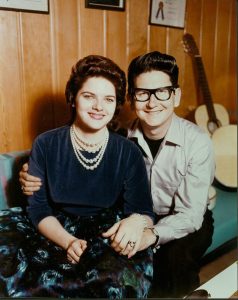 Roy Orbison is madly in love with the teenager Claudette Frady and writes the song “Claudette” for her. Sam Phillips from Sun Records likes it a lot and has it recorded by the Everly Brothers, who eventually use it as a B-side for one of their many #1 hits: “All I Have To Do Is Dream” (1957).
Roy Orbison is madly in love with the teenager Claudette Frady and writes the song “Claudette” for her. Sam Phillips from Sun Records likes it a lot and has it recorded by the Everly Brothers, who eventually use it as a B-side for one of their many #1 hits: “All I Have To Do Is Dream” (1957). 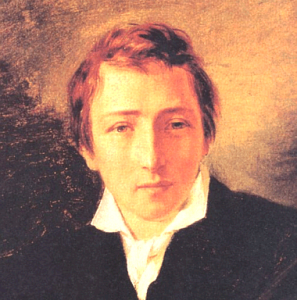
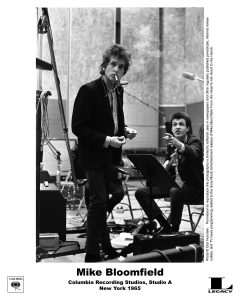 Of course, those Warfield performances have historical value not only because of Dylan’s passion, and certainly not because of the primeval version of Groom, but most of all because of the swan song of the unforgettable Mike Bloomfield. Gifted and influential guitarist Bloomfield is a mid 60’s comrade in arms, to whom a large part of the impact of Highway 61 can be attributed.
Of course, those Warfield performances have historical value not only because of Dylan’s passion, and certainly not because of the primeval version of Groom, but most of all because of the swan song of the unforgettable Mike Bloomfield. Gifted and influential guitarist Bloomfield is a mid 60’s comrade in arms, to whom a large part of the impact of Highway 61 can be attributed. 
